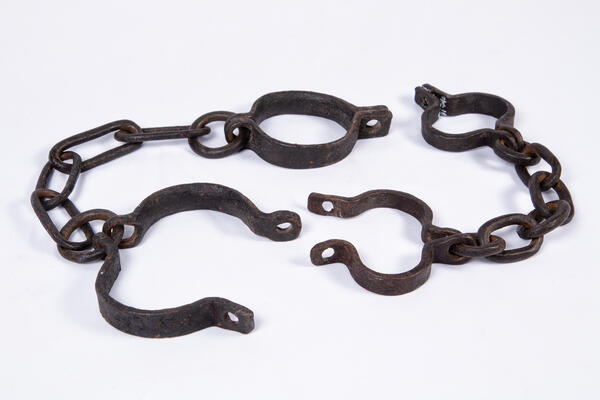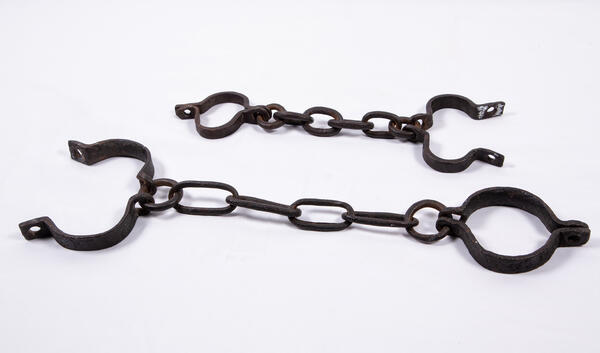Shackles are iron bracelets connected by a chain with large links. They were put on the prisoners’ wrists or ankles to prevent them from moving or escaping. Sometimes shackles were used as a form of punishment. The cuffs were fastened with a special metal rod so that the prisoners could not remove on their own. The chain might join handcuffs and leg shackles separately, or they might be linked into a single system that restrained movement as much as possible. Sometimes the shackles were nailed to the wall or the floor, or had a load attached, making it difficult for the prisoner to move.
The handcuffs and foot shackles from the collection of the Nevyansk Historical and Architectural Museum were widely used on workers: the first plant owners had several occasions to quell riots and unrest among their employees. For this purpose, a variety of punishments were imposed: in addition to shackles, the culprit could be flogged with a whip or a stick and sent to a dungeon. For example, in 1742, the Nevyansk plant office tried to recover arrears of the head tax for the “retired” workers. The workers refused to pay, and unrest began in ten of Demidov’s plants, causing huge losses and disruptions in the supply of goods, especially for the army. Ensign Klim Ivanov arrived at the Nevyansk plant to collect the arrears. He arrested and shackled some workers and “kept them until ordered.”
The peasants that were assigned to the Nevyansk plant also took part in the protests. They were outraged by the increase in the amount of work along with a simultaneous decrease in pay. The assigned peasants only had to work to cover the amount of the per capita tax, but it was decided “to use them in all kinds of work equally with serfs.” There were also so-called “permanent” workers who were “forever” assigned to the Nevyansk plant and other factories but were not serfs. Over several decades, they kept struggling for their right to work only for the per capita salary at the plant, and to work “on their own” for the remaining hours. The right would mean higher wages, as well as the freedom to engage in trade and crafts.




